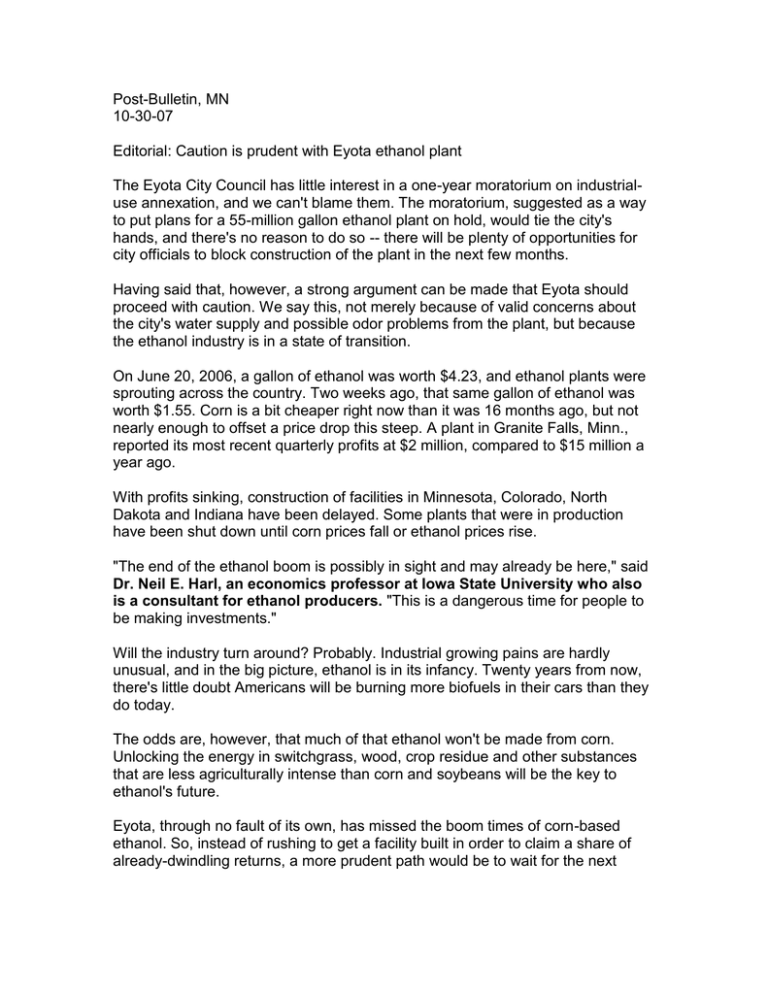Post-Bulletin, MN 10-30-07 Editorial: Caution is prudent with Eyota ethanol plant
advertisement

Post-Bulletin, MN 10-30-07 Editorial: Caution is prudent with Eyota ethanol plant The Eyota City Council has little interest in a one-year moratorium on industrialuse annexation, and we can't blame them. The moratorium, suggested as a way to put plans for a 55-million gallon ethanol plant on hold, would tie the city's hands, and there's no reason to do so -- there will be plenty of opportunities for city officials to block construction of the plant in the next few months. Having said that, however, a strong argument can be made that Eyota should proceed with caution. We say this, not merely because of valid concerns about the city's water supply and possible odor problems from the plant, but because the ethanol industry is in a state of transition. On June 20, 2006, a gallon of ethanol was worth $4.23, and ethanol plants were sprouting across the country. Two weeks ago, that same gallon of ethanol was worth $1.55. Corn is a bit cheaper right now than it was 16 months ago, but not nearly enough to offset a price drop this steep. A plant in Granite Falls, Minn., reported its most recent quarterly profits at $2 million, compared to $15 million a year ago. With profits sinking, construction of facilities in Minnesota, Colorado, North Dakota and Indiana have been delayed. Some plants that were in production have been shut down until corn prices fall or ethanol prices rise. "The end of the ethanol boom is possibly in sight and may already be here," said Dr. Neil E. Harl, an economics professor at Iowa State University who also is a consultant for ethanol producers. "This is a dangerous time for people to be making investments." Will the industry turn around? Probably. Industrial growing pains are hardly unusual, and in the big picture, ethanol is in its infancy. Twenty years from now, there's little doubt Americans will be burning more biofuels in their cars than they do today. The odds are, however, that much of that ethanol won't be made from corn. Unlocking the energy in switchgrass, wood, crop residue and other substances that are less agriculturally intense than corn and soybeans will be the key to ethanol's future. Eyota, through no fault of its own, has missed the boom times of corn-based ethanol. So, instead of rushing to get a facility built in order to claim a share of already-dwindling returns, a more prudent path would be to wait for the next generation of ethanol plants, which presumably will use less fossil fuel, produce less pollution and won't require farmers to plant corn fencerow-to-fencerow.




